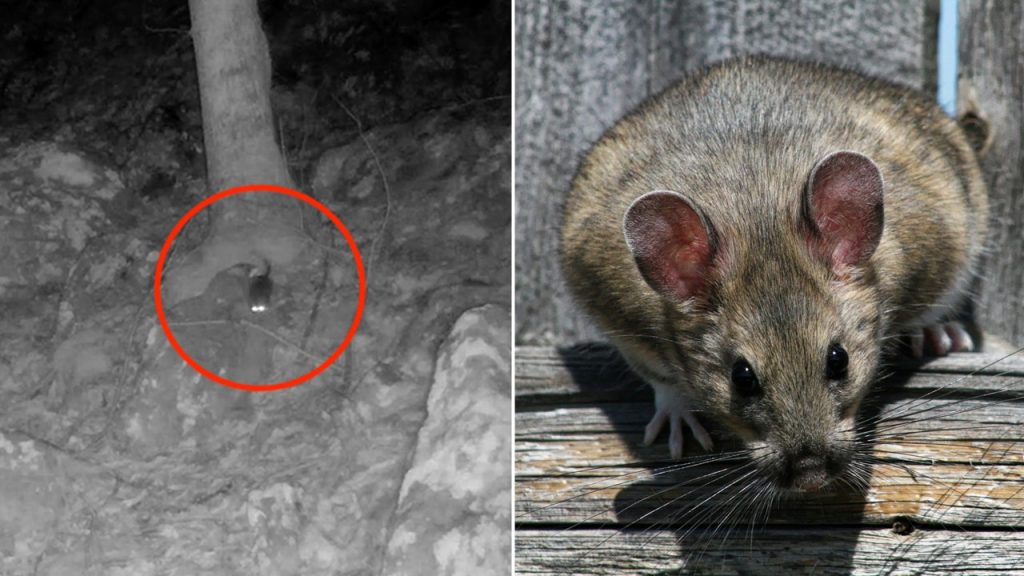An Allegheny woodrat, a sensitive species, was spotted on a West Virginia trail in the Allegheny mountains. Officials from Monongahela National Forest posted a video on Facebook showing the 17-inch-long rodent moving around in the darkness, captured by a trail camera on March 12, 2024. The woodrats primarily inhabit hardwood forests with rocks and boulders and are more closely related to mice than rats. The population of Allegheny woodrats is slowly declining in the U.S., with an estimated 100,000 remaining in the wild. Scientists believe the decline may be due to the gypsy moth harming acorn-bearing oak trees, an important food source for the woodrats, as well as habitat degradation.
The Allegheny woodrats are considered a species of concern by the U.S. Fish and Wildlife Service and in some states, including Pennsylvania, they are listed as threatened and protected. Common predators of the woodrat include raccoons, coyotes, weasels, great horned owls, and black rat snakes. The range of the Allegheny woodrat once extended from southwestern Connecticut to Indiana and south to northern Alabama but has since extirpated from Connecticut and New York. Studies have documented a decline in remaining northern states, and its status in southern states is unknown due to a shortage of recent surveys. In 2022, both adult and young Allegheny woodrats were discovered in West Virginia’s Harpers Ferry National Historical Park after not being seen for 20 years, leading officials to believe they had gone extinct in the area and other parts along the Appalachian.
Scientists believe the decline in the population of Allegheny woodrats may be due to the gypsy moth harming acorn-bearing oak trees, an important food source for the woodrats, as well as habitat degradation. They are considered a species of concern by the U.S. Fish and Wildlife Service and are listed as threatened and protected in some states, including Pennsylvania. Common predators of the woodrat include raccoons, coyotes, weasels, great horned owls, and black rat snakes. The range of the Allegheny woodrat once extended from southwestern Connecticut to Indiana and south to northern Alabama but has since extirpated from Connecticut and New York, with a documented decline in remaining northern states and an unknown status in southern states due to a lack of recent surveys.
In 2022, both adult and young Allegheny woodrats were discovered in West Virginia’s Harpers Ferry National Historical Park after not being seen for 20 years, leading officials to believe they had gone extinct in the area and other parts along the Appalachian. The discovery of the woodrats in the park was significant as it indicates the presence of the elusive rodent in the region. The U.S. Forest Service has been monitoring the population of Allegheny woodrats and is working to protect and conserve this sensitive species. With ongoing research and conservation efforts, there is hope for the recovery and preservation of the Allegheny woodrat population in the U.S.















